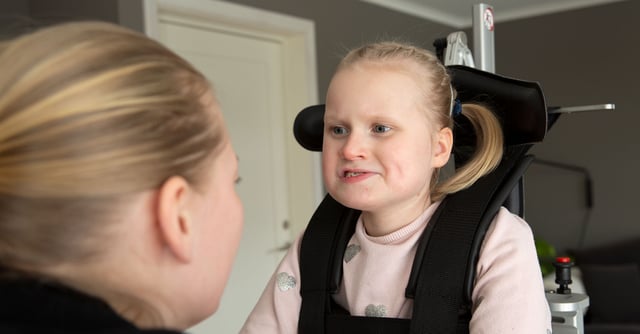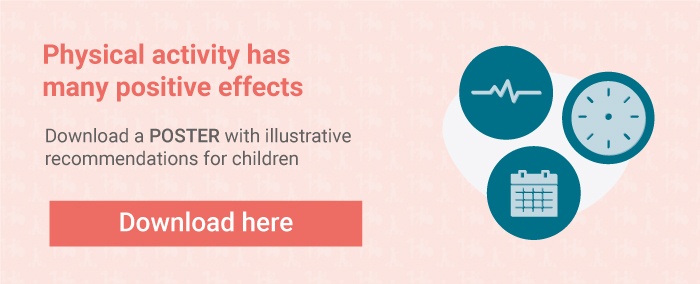
Jul 19, 2018[Video] This Is How Selma Lives with Retts syndrome

Back to Blog Overview
Innowalk and adaptations make Selma able to live an active and enjoyable life despite a few challenges.
Selma is a happy 10-year-old girl with Rett syndrome. She lives together with her mother, father and two siblings of seven and thirteen years of age. Where some children need to share rooms with their siblings, Selma is lucky enough to have her own little annexe, specially adapted to her needs. In the annexe, there’s enough space to use different types of devices, a specially adapted bathroom and even windows that go all the way to the floor so Selma can enjoy the views while laying on her belly.
What is Rett syndrome?
Most people are unfamiliar with Rett syndrome, so we’ll give a short explanation here. The syndrome is usually discovered when the child is around six months old. This is also when the child’s development starts to slow down or even stop. The severity varies from person to person, but common symptoms are delayed development of the brain, problems with communication, coordination and movement, breathing difficulties and irritability. The syndrome is most commonly seen in girls, and only rarely in boys.
Having Rett syndrome can be challenging, so making the right adaptations is important in order to live a fulfilling life. Selma is a prime example of this.
Read more: What is Rett Syndrome?
Training in the Innowalk
Selma’s been using Innowalk since the age of two when she was introduced to the walking aid by the rehabilitation services. The goal was to train on standing with support, but also to explore the abilities to walk. Today, Selma’s able to sit and stand independently and even able to walk walk short distances if helped and guided by a grown-up. Selma’s using these abilities to move around the house, and to get dressed.
Her mother elaborates:
“If Selma’s is feeling tired or in a bad mood, without any obvious reasons, we don’t abstain from activities. Quite on the contrary – it’s good for her to get into the Innowalk and get some movement as her body often responds positively to activity. It’s something I can relate to; I feel quite good myself after a run.”
Selma trains in the Innowalk four days a week, with two of these sessions held together with her personal assistant. She’s also in the pool once a week and attends therapeutic horseback riding. Like many other young girls, she really enjoys herself on the horseback, which also has improved her sitting balance.
Read more: What effect does Innowalk have on children with gross motor impairment?
What results has Selma had so far?
When Selma was a little girl, she got quite sick, ending up at the hospital where she got constipation. Her parents took her home once a day to walk in the Innowalk, which really helped with the stomach. The improved gastrointestinal function is actually a common effect of training in the Innowalk. In addition, Selma’s achieved the following:
Increased stability and strength Maintenance of gross motor function Prevention of contracture and incorrect positions
Last but not least, her training has led to an increase in activity levels. Most people familiar with children will probably say it’s the most important achievement.

Rikke Damkjær Moen brings many years of experience as clinical physiotherapist to the Made for Movement team. Her mission is to ensure that everybody, regardless of mobility problems, should be able to experience the joy and health benefits of physical activity. As our Medical Manager, Rikke is passionate about sharing knowledge so that individuals with special needs, families, and clinicians can discover the possibilities and solutions provided by Made for Movement.


